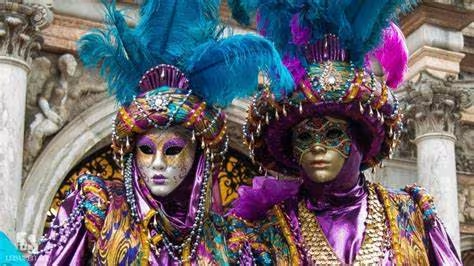Venice’s Carnival, one of the most famous and extravagant festivals in the world, transforms the floating city into a magical wonderland each year. With its elaborate masks, grand parades, and festive atmosphere, the event draws thousands of visitors eager to experience its unique blend of tradition and spectacle.
A Festival with Ancient Roots
The origins of the Carnival of Venice date back to the 12th century, with the first official mention in 1296 when the Senate of the Venetian Republic declared it a public holiday. The festival allowed Venetians to indulge in merrymaking before the restrictions of Lent. Masks played a crucial role, offering anonymity and social equality, allowing people from all classes to mix freely. However, the tradition declined in the 18th century and was eventually banned under Austrian rule. It wasn’t until 1979 that Venice revived its historic Carnival, turning it into the grand cultural event it is today.
A Step Towards Sustainability
This year marks a new chapter in the Carnival’s history as it becomes more environmentally conscious. For the first time, Venice is using 100% biodegradable confetti and streamers, a move aimed at reducing pollution in the city’s delicate ecosystem. Traditional confetti, often made of plastic or coated paper, contributed to waste accumulation in the canals and streets. By switching to biodegradable materials, the city hopes to maintain the festive atmosphere while preserving its historic beauty for future generations.
Venice’s Carnival continues to be a spectacle of tradition and innovation, blending centuries-old customs with modern sustainability efforts. As the city celebrates, visitors can enjoy the vibrant festivities, knowing they are part of a greener and more responsible future.



